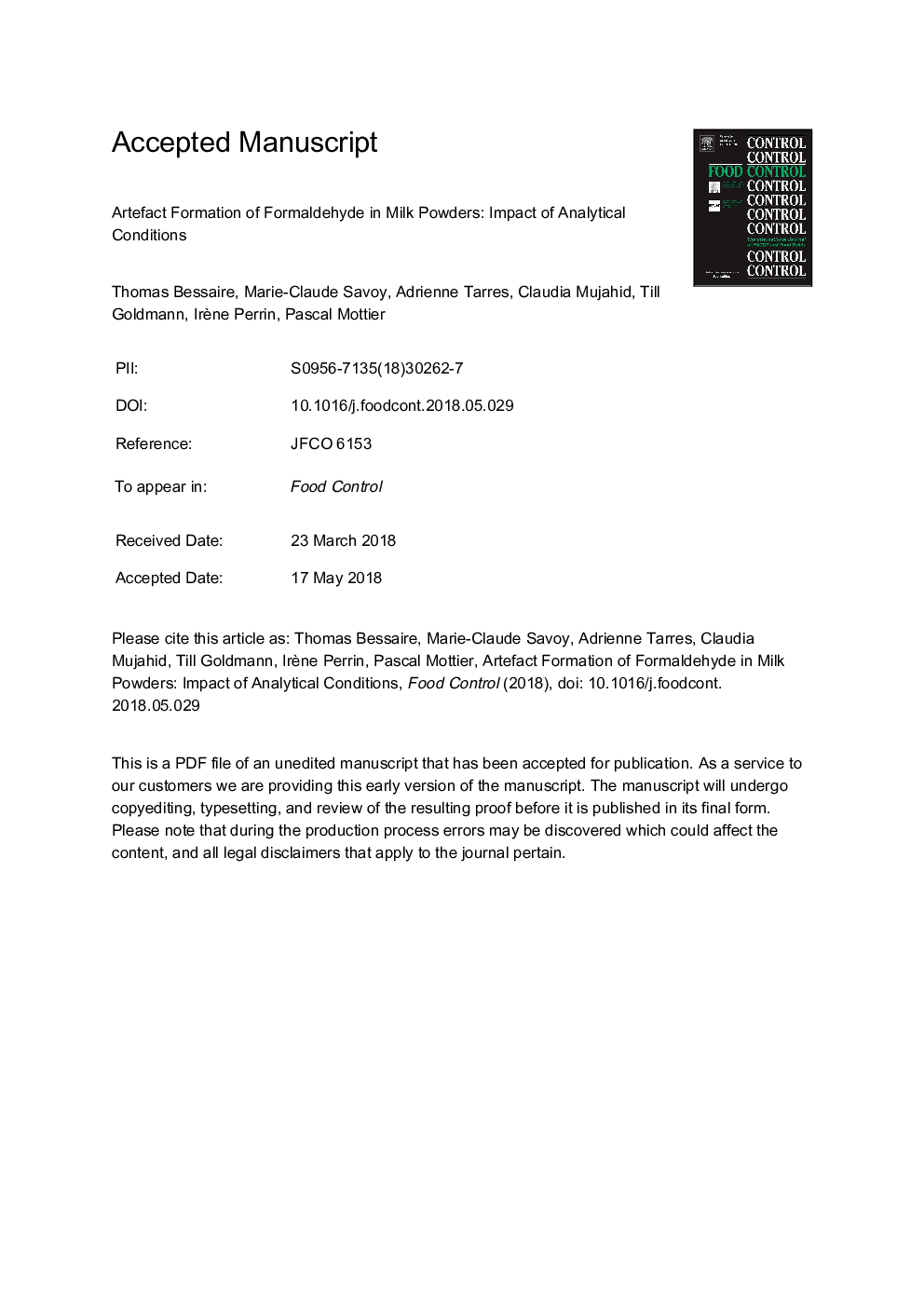| Article ID | Journal | Published Year | Pages | File Type |
|---|---|---|---|---|
| 8887687 | Food Control | 2018 | 23 Pages |
Abstract
Formaldehyde (FA) was analyzed in milk powders by isotope dilution LC-MS/MS using 2,4-dinitrophenylhydrazine (DNPH) as the derivatization agent. Analytical conditions (temperature and time) applied for derivatization were shown to strongly impact the levels of FA detected in micronutrient-fortified milk powders. In particular, vitamin C and ferrous iron catalyzed FA formation when derivatization was conducted at 60â¯Â°C, as described by several authors. Artefact formation of FA was demonstrated in a model study using 2H2-glycine and a freeze-dried raw cow's milk with added micronutrients. A limited survey of commercial fortified milk powders showed that FA levels were about 4-fold lower when analyses were conducted at room temperature as compared to 60â¯Â°C (0.65â¯Â±â¯0.25â¯mg/kg and 2.57â¯Â±â¯0.51â¯mg/kg, respectively). Based on data obtained at room temperature, FA exposure from fortified milk powders does not represent a safety concern even under worst-case assumptions. This study highlights the need and importance of adopting an international standard for FA analysis in foods.
Related Topics
Life Sciences
Agricultural and Biological Sciences
Food Science
Authors
Thomas Bessaire, Marie-Claude Savoy, Adrienne Tarres, Claudia Mujahid, Till Goldmann, Irène Perrin, Pascal Mottier,
